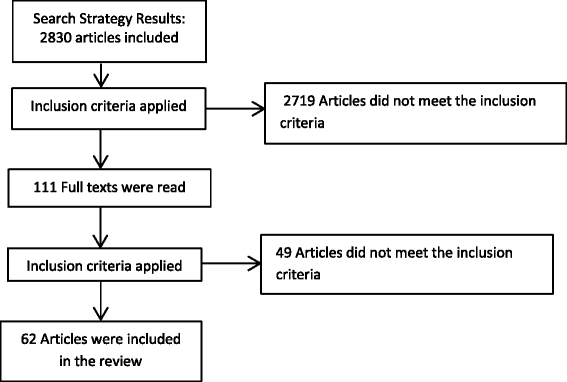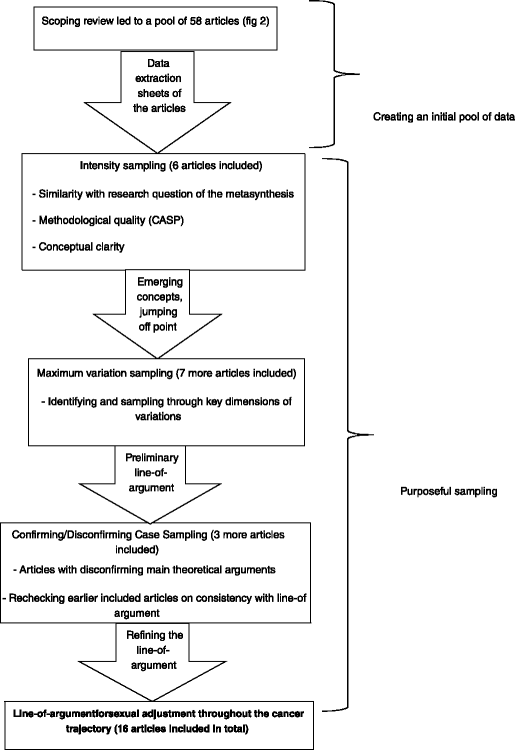The use of purposeful sampling in a qualitative evidence synthesis: A worked example on sexual adjustment to a cancer trajectory
- PMID: 26891718
- PMCID: PMC4757966
- DOI: 10.1186/s12874-016-0114-6
The use of purposeful sampling in a qualitative evidence synthesis: A worked example on sexual adjustment to a cancer trajectory
Abstract
Background: An increasing number of qualitative evidence syntheses papers are found in health care literature. Many of these syntheses use a strictly exhaustive search strategy to collect articles, mirroring the standard template developed by major review organizations such as the Cochrane and Campbell Collaboration. The hegemonic idea behind it is that non-comprehensive samples in systematic reviews may introduce selection bias. However, exhaustive sampling in a qualitative evidence synthesis has been questioned, and a more purposeful way of sampling papers has been proposed as an alternative, although there is a lack of transparency on how these purposeful sampling strategies might be applied to a qualitative evidence synthesis. We discuss in our paper why and how we used purposeful sampling in a qualitative evidence synthesis about 'sexual adjustment to a cancer trajectory', by giving a worked example.
Methods: We have chosen a mixed purposeful sampling, combining three different strategies that we considered the most consistent with our research purpose: intensity sampling, maximum variation sampling and confirming/disconfirming case sampling.
Results: The concept of purposeful sampling on the meta-level could not readily been borrowed from the logic applied in basic research projects. It also demands a considerable amount of flexibility, and is labour-intensive, which goes against the argument of many authors that using purposeful sampling provides a pragmatic solution or a short cut for researchers, compared with exhaustive sampling. Opportunities of purposeful sampling were the possible inclusion of new perspectives to the line-of-argument and the enhancement of the theoretical diversity of the papers being included, which could make the results more conceptually aligned with the synthesis purpose.
Conclusions: This paper helps researchers to make decisions related to purposeful sampling in a more systematic and transparent way. Future research could confirm or disconfirm the hypothesis of conceptual enhancement by comparing the findings of a purposefully sampled qualitative evidence synthesis with those drawing on an exhaustive sample of the literature.
Figures
References
-
- Hannes K, Macaitis K. A move to more systematic and transparent approaches in qualitative evidence synthesis: update on a review of published papers. Qual Res. 2012;12:402–442. doi: 10.1177/1468794111432992. - DOI
-
- Noyes J, Popay J, Pearson A, Hannes K, Booth A. Qualitative Research and Cochrane Reviews. In: Julian H, Sally G, editors. Cochrane Handbook for Systematic Reviews of Interventions. UK: Wiley Blackwell; 2008.
-
- Hannes K, Lockwood C, editors. Synthesizing Qualitative Research. Chichester: John Wiley & Sons, Ltd; 2011.
Publication types
MeSH terms
LinkOut - more resources
Full Text Sources
Other Literature Sources



